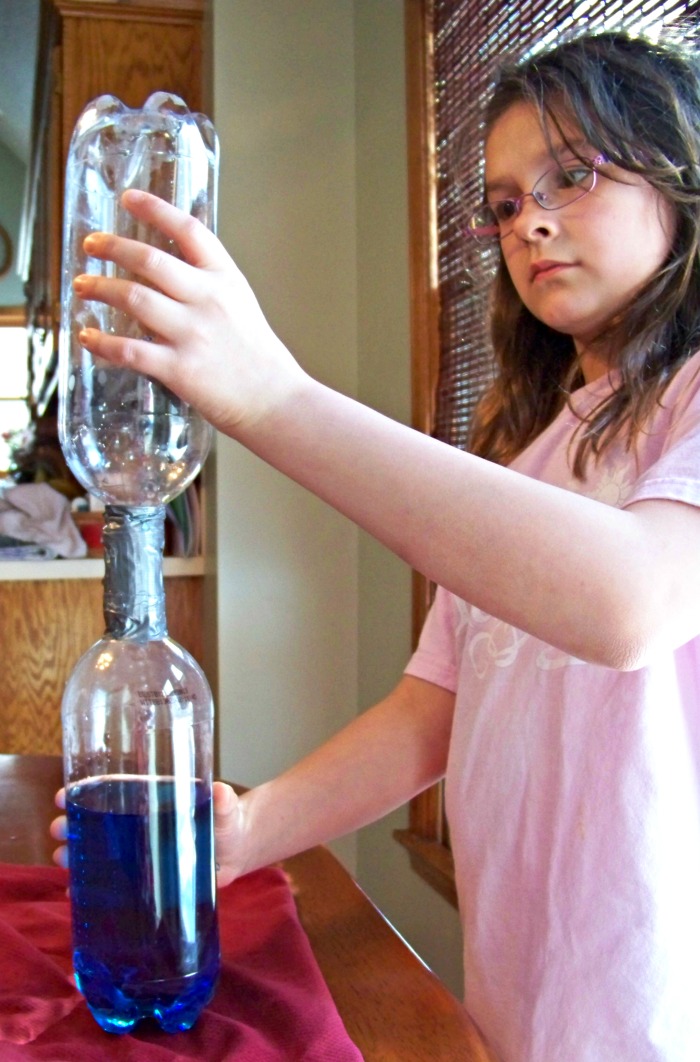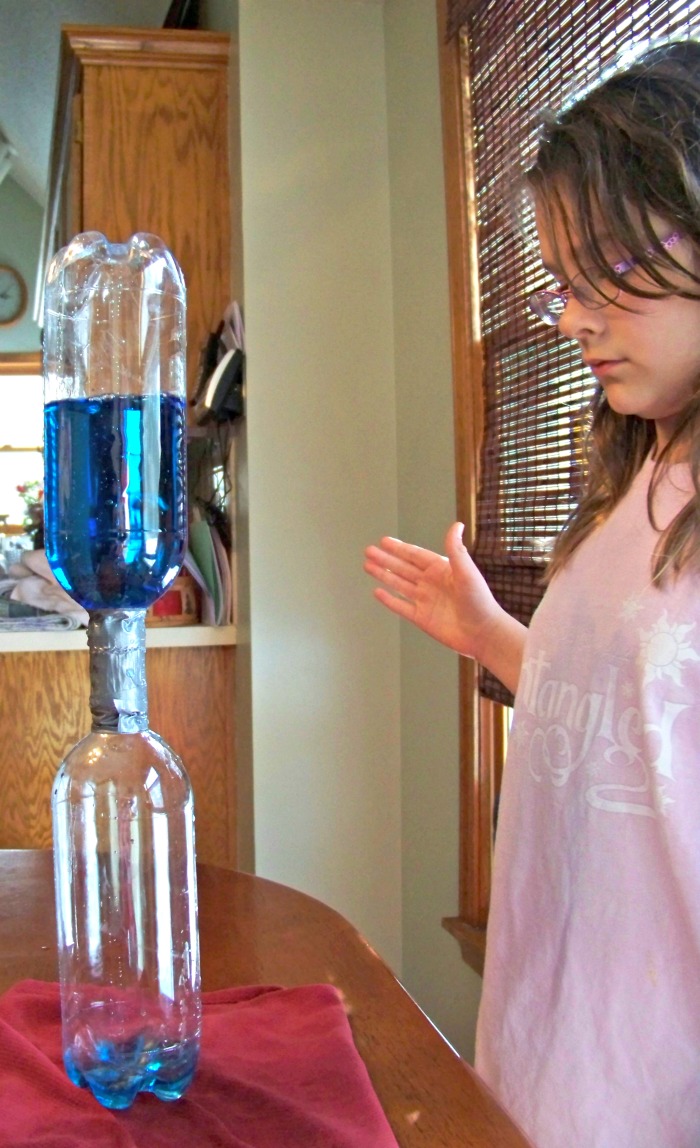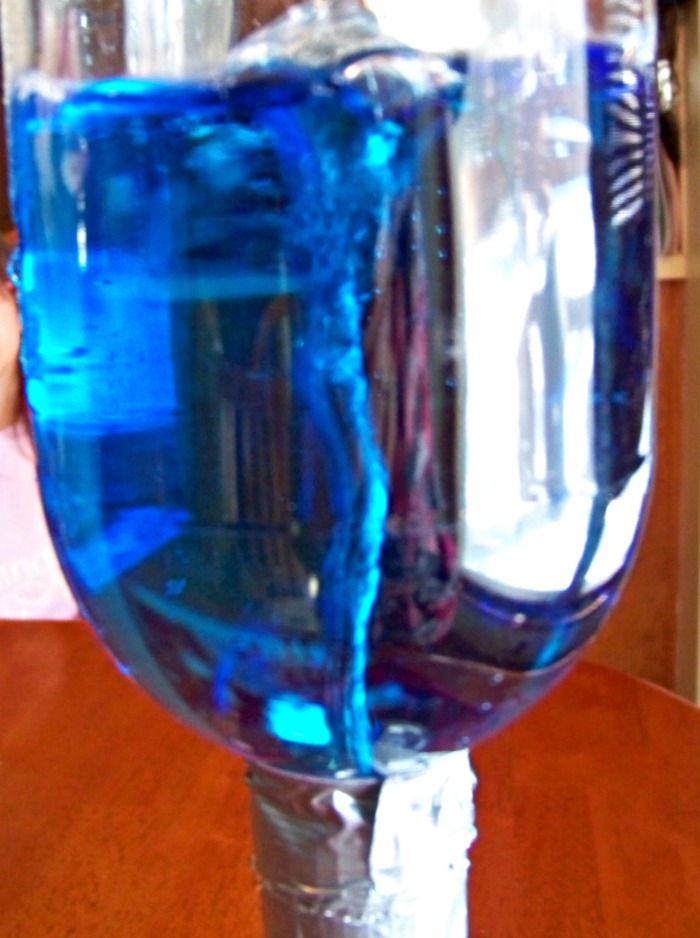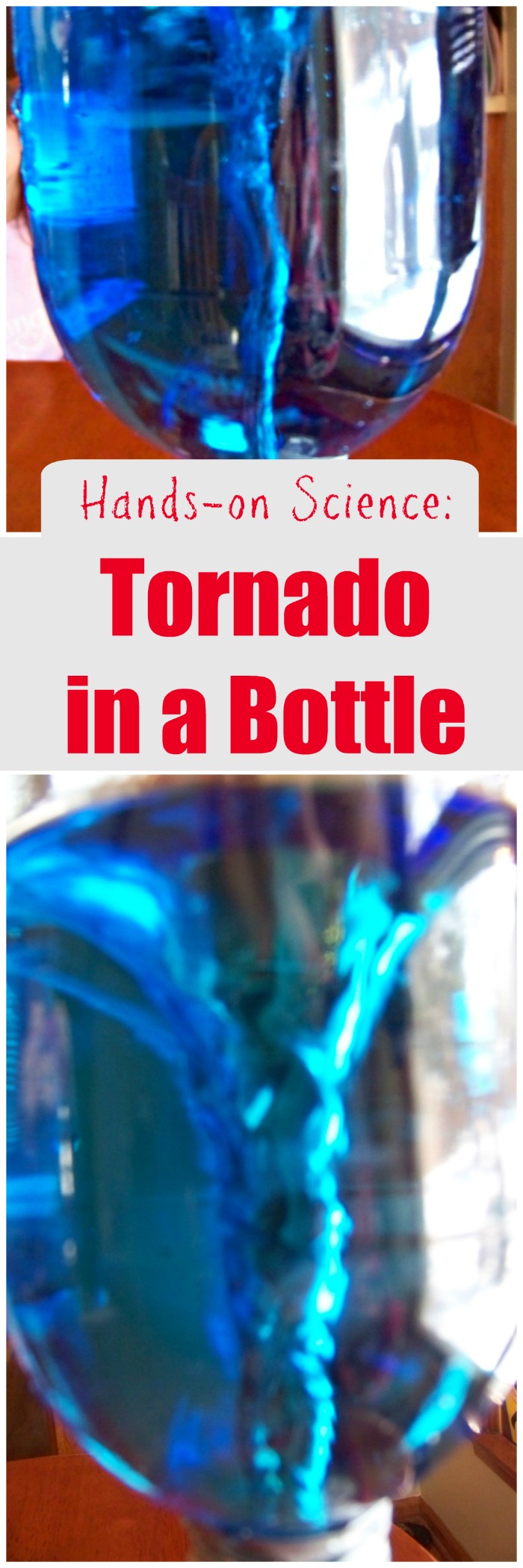Upcycle items from around the house for this easy tornado in a bottle science experiment!
Sometimes an activity can introduce us to something that we aren’t able to experience in real life and today’s science project does just that!
Spring brings all kinds of weather across the country and one of the worst types of storms are tornadoes.
Living in Kansas, we’ve had to duck-and-cover quite a few times, huddling in the basement until the storm sirens sound the all clear but thankfully, we have never been caught in a tornado!
But kids will be kids and ask all those great questions — ‘how do tornadoes start?‘ and ‘what makes them so dangerous?‘ so we thought we’d take a closer look at these storms by creating our own tornado in a bottle!
Tornado in a Bottle Science Experiment
Kansas is one of a handful of states that is located in ‘Tornado Alley’, a section in the middle of the U.S. that got it’s nickname because these areas are most likely to experience tornadoes. But with the right weather conditions, tornadoes can happen almost anywhere in the country.
A tornado is a storm that is created when a cold front and warm front meet – when my kids were young, I would tell them that the hot air and cold air get into a scuffle about who’s the strongest. There also needs to be moisture for a tornado to occur.
Many tornadoes in our area occur in the Spring since the conditions are right so we’re always sure to check the weather forecast before heading out on one of our famous road trips!
As with all projects we do — but especially with projects that are hard to experience — we’re including a list of some great books along with their affiliate links so you can safely introduce tornadoes to your kids 🙂
Tornadoes! by Gail Gibbons gives you all the facts about how tornadoes form, how they are classified and what to do if you’re ever near one. The book uses illustrations instead of photos so younger children can grasp the ideas.
Tornado Alert (Let’s-Read-and-Find-Out Science 2) from our favorite early science series is great for kids ages 6 – 9 years. The reader will learn about funnel clouds, how tornadoes form and more details about the storms with great details about what to do if you ever experience one.
Twisters and Other Terrible Storms: A Nonfiction Companion to Magic Tree House 23: Twister on Tuesday is excellent for older kids and gives in-depth details about the history of real tornadoes along with some wonderful insight into the weather behind these storms. If your kids are fans of Jack and Annie, the non-fiction books are a great way to extend their learning.
And if you’re looking for a good picture book, try The Bravest of Us All by Marsha Diane Arnold. Ruby Jane knows that her oldest sister, Velma Jean, is the bravest of all the 7 kids in her family. She sees Velma Jean do all kinds of brave things on the farm. But when a tornado heads toward their farmhouse, Ruby Jane learns that her courage is help her sister is even stronger than the tornado’s winds!
Tornadoes have a very well-known shape — they look like a long, thin triangle balancing on it’s tip.
If you were able to view them from the sky, you would see that the center of the tornado appears hollow – this center area is called the tornado’s eye and it forms a vortex which is a mass of circulating air.
The vortex occurs when the winds are spinning very fast – so fast that nothing can stay in the middle, the force pulls everything to the outer sides of the storm. These fast spinning winds are also what give the tornado it’s nickname of ‘twister’.

Materials to Make a Tornado in a Bottle
We’re big on doing simple science at our house (have you seen the “How does a Leaf Breathe?” experiement yet? Awesome activity!)
To make your own tornado, here’s what you’ll need along with affiliate links for items we used during our project:
- (2) 1 liter water or soda bottles (you can also use 2 liter bottles but I like the smaller ones because they are easier for the kids to hold)
- a metal washer
- blue food coloring
- duct tape

We found these directions at the National Oceanic and Atmospheric Administration. Pop over and print off the details so you’ll have them BUT read on first for a simplified version.
Now the directions are going to say you need to use a ‘plastic connector’ which I call a ‘tornado tube‘ — BUT, we didn’t use one 😉
If you’re planning to do this in a classroom, than I would recommend a tornado tube as it will help reinforce the structure — but if you’re doing it at home, you probably won’t need one (just be sure the first time you flip your bottles, you do it outside or over the sink 😉
Instead, we just made sure to tape those bottles together really well!
Tornado in a Bottle Directions:
- Fill the bottom bottle 3/4 full of water and add 5 or 6 drops of blue food coloring to your water.
- Then place the washer on the top of the bottle neck.
- Put your second empty bottle upside down on the washer and tape the two bottle necks together.
The washer should fit on the bottle’s top without being larger than the bottle opening and not so small that it will fall in. Be sure to wrap the duct tape around the bottle necks quite a few times to seal them together.
We further modified the activity a little by substituting blue food coloring for the dishwashing detergent and it worked great!

Once you have the bottles taped together, be sure all the water is in the bottom bottle.

Then just take hold of the bottles and quickly flip them over so the water is in the top bottle.
As you can see, we put a towel under our tornado bottle just in case there was any leaking (but there wasn’t!)
As the water drains from the top bottle to the bottom, you will see a funnel begin to form inside your bottle.

You can see in this photo that our funnel begins as a thin spiral movement of the water.
But as the water continues to drain ….

… the funnel becomes wider and you can really see a vortex forming in this close-up look.
And there you go — tornado in a bottle 🙂
Pretty cool, huh!
Your kids will enjoy turning the bottles around a few times – it’s easy to get mesmerized by the swirling water.
And if they’re interested in just how fast the winds can get inside the eye of a tornado, you can learn more about how winds are measured with the Fujita Scale (or f-scale) and the types of damage that can be caused by storms of different sizes.
If you have a mini-meteorologist in your home, you’ll also enjoy these activities:
The Backyard Safari Storm Chaser Field Kit
Learning Resources Weather Tracking Map & Station
More Weather Activities:
How Much Water is in Snow? Science Experiment
10 Umbrella Stories for all Kinds of Weather
Cat in the Hat Science: Weather Activities
For this activity, we are one of 50+ blogs hosting a fantastic ‘Booking Across the USA’ blog project!
Together, we each feature a kids’ book and activity for all of the 50 States — visit Growing Book by Book, for all the book titles & activities.





